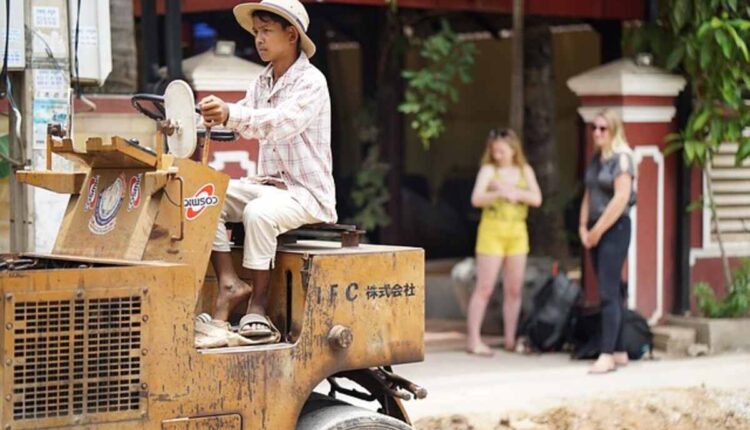Makita Demolition Hammer
VEVOR demolition hammers deliver the power necessary for heavy-duty construction projects, while their intelligent designs enable efficient and precise breaking tasks. Best way to find the Santa Ana Demolition Contractor.
For projects requiring significant power for breaking through hard materials such as concrete structures and foundations, such as breaking concrete structures. Demolition hammers feature higher impact energy, making for forceful blows. Furthermore, they’re excellent tools for drilling and chiseling operations.
Features
Makita demolition hammers are engineered with the power and strength necessary for penetrating rigid materials with ease, while many models include features designed to minimize vibration, noise, and dust for user comfort.
The HM1502 is a 43-pound demolition hammer with serious power. It is equipped with a 15-amp motor that delivers 36.2 ft-lbs of impact energy into materials, making it suitable for breaking through concrete as well as digging and tamping. Plus, its Soft Start feature gradually ramps up speed and force so as not to jar your hand so much when pulling the trigger. Plus, its OSHA Table 1 compliance can be maintained with Makita dust extractor VC4210L/XCV13 dust extractors!
Similarly, the HM1307CB is a 35-pound demolition hammer built for heavy-duty use. Accepting SDS max bits, it features a constant speed control that automatically applies additional power under load to maintain speed; additional features include a soft start for improved accuracy and 12-bit angle settings for operator convenience.
Selecting the appropriate demolition hammer depends on a careful evaluation of material properties, application needs, and user preferences. Rotary hammers offer versatile usage, with their ability to switch between drilling, chiseling, and hammer drill modes. Though they tend to be heavier and bulkier, some materials may pose particular difficulties for these models.
Power
The demolition hammer is one of many power tools explicitly designed to demolish various structures during construction projects. Compared with other tools, its higher impact energy helps break down structures like concrete walls and tile flooring more quickly. Furthermore, this tool features a variable speed control dial that enables users to match speed with application needs; additionally, it has a constant speed control feature that applies additional power automatically when under load to maintain motor speed.
Makita demolition hammers stand out with their anti-vibration technology, designed into every primary class hammer from 1″ rotary to 70 lb breaker hammers, for maximum user comfort during extended use without fatigue. Their ergonomic handle has padding, while internal counterbalance systems reduce vibration levels significantly. Makita offers AVT models in every major category, from 1″ rotary hammers up to 70 lb breaker hammers, to provide users with greater efficiency during prolonged work sessions.
A demolition hammer is a power tool used for breaking, chiseling, and drilling tasks. With its emphasis on forceful blows, this powerful device excels at heavy-duty demolition work where power is the primary consideration. On the other hand, rotary hammers excel in applications requiring both drilling precision and force—such as installing anchors or creating holes for pipes. Understanding these differences will ensure you select the appropriate tool for any specific job site application to maximize efficiency and results.
Comfort
The Makita HM1214C was engineered to be tough on concrete without being harsh on users. Equipped with Makita’s exclusive Anti-Vibration Technology (AVT), an internal counterbalance system that significantly reduces vibration in both tool and user hands, its 14 AMP motor delivers hard-hitting power for breaking through walls, floor foundations, and trench digging applications. It also features a soft start and variable speed control dials so users can match speed to the application perfectly. 1-1/8″ Hex bits are accepted for greater versatility, making this tool ideal for demolition/breaking applications as well.
Makita’s latest demolition hammer, the HM1502AVT, offers enhanced user comfort. Equipped with AVT vibration-reducing technology that reduces more than 50% vibration from this otherwise violent tool. Furthermore, this model includes an electronic variable speed adjusting dial, no-hammer when idle function for increased battery life, and a 16.4-foot cord with easy switch operation for increased durability. Suitable applications include chipping excess concrete from over-pours, laminate flooring/tile removal/permeations through wall penetrations, and breaking and digging hard dirt materials, among many more applications.
Safety
Makita demolition hammers with AVT feature equal vibration control as the HM1502 but deliver more impact force, which makes a big difference when undertaking demolition tasks that require high energy levels and significant efforts. Thanks to the counterbalance system, which dramatically decreases vibration levels experienced by users.
This 14-amp motor easily powers through concrete and other materials, and its anti-vibration technology helps ensure user comfort. The inline tool design makes for effective downward vertical applications, and its automatic brush cut-off system protects its commutator for an extended lifespan.
This demolition hammer features SDS Max bits for precise demolition work and features a soft start for greater comfort and precision. A variable speed dial lets users match motor power with job-specific tasks, while its constant power control feature automatically adds extra force when required. Soft start technology reduces start-up reaction for increased control, with 12-bit angle settings providing operator convenience. This hammer features an LED service light to notify users approximately eight hours before the replacement of breaker hammer brushes is required and an LED power light that indicates switch failure or cord damage. Ideal for various construction tasks, including heavy structural demolition, blasting through lower wall zones and foundations, trench digging/tamping/tapping asphalt removal, as well as driving ground rod and tent stakes into place.


